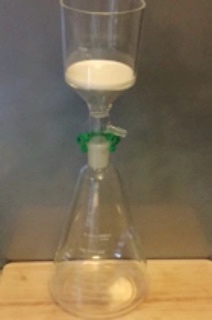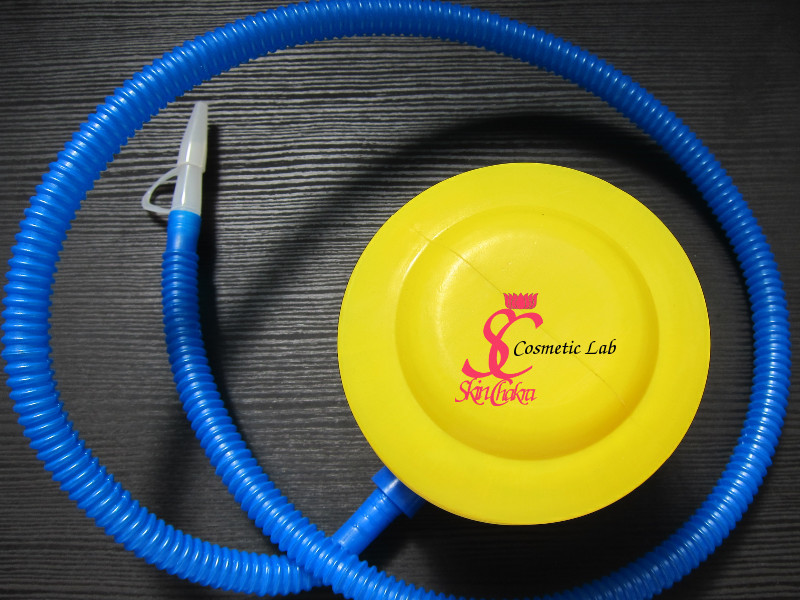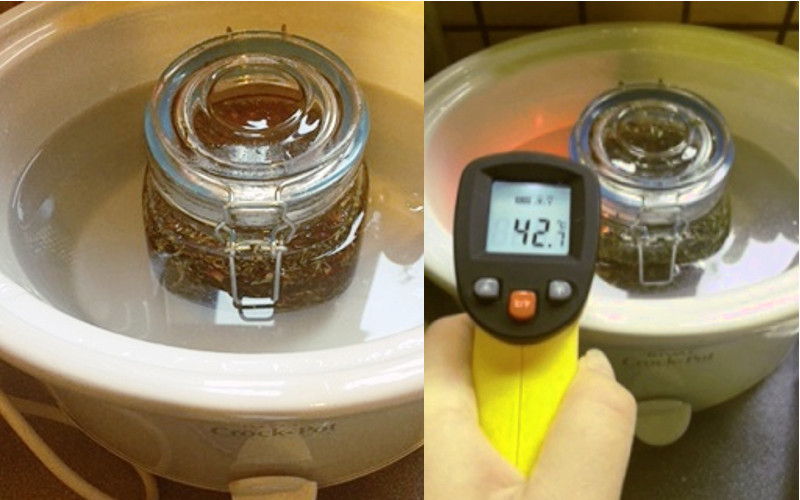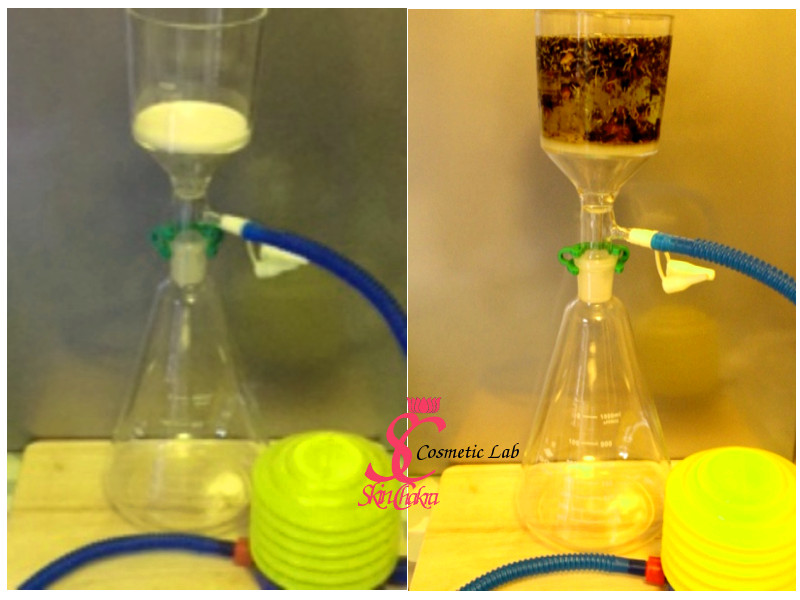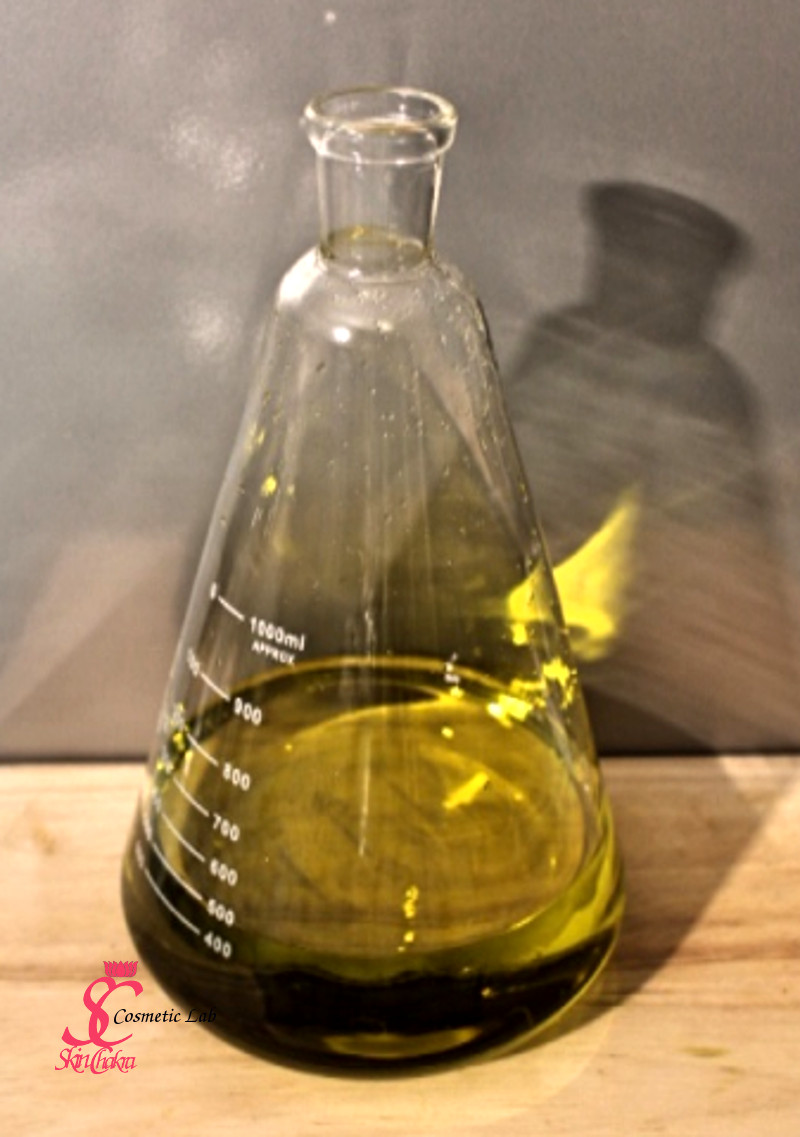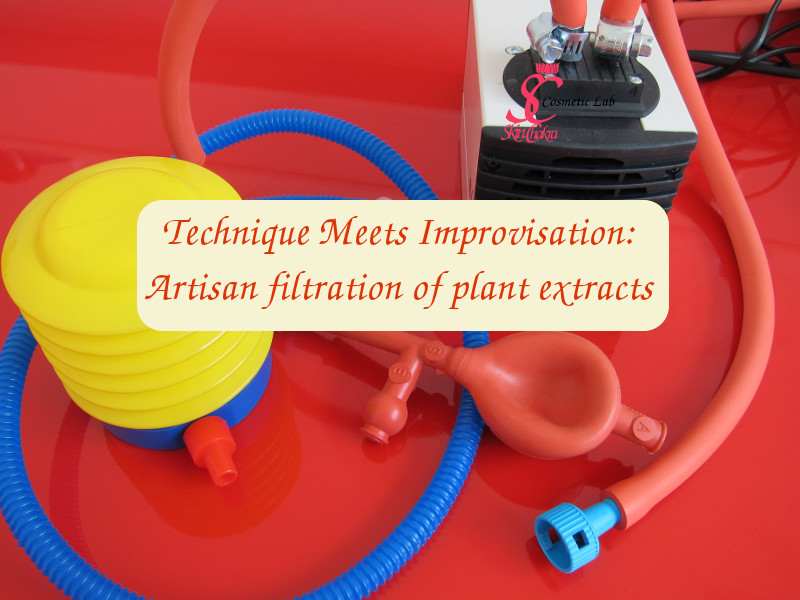
Donnerstag, 9. Juni 2016
How to filter your herbal extracts and infusions (Part III)
If you have followed me through the previous parts, you are already familiar with the veggiefino method which allows you hygienic filtration of your infusions and extracts. This step is similar to using a cheese cloth but is much more hygienic and have much less waste and mess.
The extracts and infusions are however not quite clear and contain some sediments (unless you work with big chunks of herbs and roots)
To improve the transparency of your extract (and improve the stability of your final product), we've suggested a couple of other filtration methods:
- gravity filtration with an ordinary funnel and filter paper,
- vacuum filtration with a buchner funnel and a suitable filter paper
- vacuum filtration with a sintered glass funnel (which is the most effective method)
The drawback of the vacuum filtration is the high price of the assembly. These glass funnels and vacuum flasks are notoriously expensive but if you often make extracts in your cosmetic or herbalist lab, it is really worth considering this investment.
There are a few ways to create vacuum for filtration. One of the most widely applied methods is the "water aspirator" method. You probably know this method from your high school lab or general chemistry lab during your college. If you have used your time in a better way than attending a chemistry lab, watch this short video to see how a water aspirator is assembled and how it works.
If you have any possibilities to assemble a water aspirator in your artisan lab and have no concerns about the water consumption, then go ahead and try this method. If however, you can not assemble a water aspirator in your lab, you'll need another way of creating vacuum.
We use a small vacuum pump in our lab for filtration. This is however, not feasible and affordable for everybody.
Last year, I have introduced an easy an affordable way to create vacuum in this blog post. Timi from Elemental Pure who is not only a genius formulator but one of the most patient and meticulous tutors I have ever met, made a fantastic tweak to my suggestion and was so generous to share her invention with us.
First, she has ordered the assembly of vacuum flask and the glass funnel for some 30 € from ebay. This is less than one tenth of the price you shall usually pay when you order the assembly by a lab supplier. It is really worth having a look on ebay and probably amazon before you pay the shameless price we usually pay for these toys.
Second, and since she didn't have that pipette filler I've introduced in my post of last year, she simply used a silly pump that accompanies any gymnastic ball as a vacuum pump.
I have at least 3 of these pumps at home and in the lab but never came to the idea of applying it as a vacuum pump. Certainly it works more slowly compared to a water aspirator or an electrical vacuum pump but if you have enough time and don't want to have your extract filtered in half an hour, this is the easiest (and most economic) way to filter your extracts in a hygienic and professional way.
Timi has shared her complete procedure with us:
She has made a "queen of Hungary" extract in olive oil.
She has put the dried herbs (this is extremely important when you're making lipophilic extracts. If your herbs have the slightest humidity, mould would grow in the extract in a few days). Put the jar in a slow cooker at low setting (quite a reasonable temperature) and left it overnight.
The next day she has filtered the extract using her genial invention.
And this is her pretty extract after filtration.
This is her experience summary in her own words:
Using this smart little filtration kit has great advantages. Although it can be a dear equipment, it can also be purchased on websites such as Ebay which is where I got mine from. It cost approx. £20 and I received it within a week.
It needs no additional parts due to a fine built-in glass filter. It is easy to keep clean and put together.
I used a simple exercise ball pump instead of an electric lab vacuum. It worked very well, however filtering the macerated oil took time. It won't be suitable if you need a macerate urgently. Having said that if you are on a restricted budget or if you are not sure you want to make extracts all the time, this is an affordable solution.
Previously, I tried using simple sieves, cheese cloths but they were messy, unhygienic and had lot of wastage. This is not the case with the glass filter.
I recommend everyone to give it a go, the filtration kit is affordable and if you do decide to upscale, you can always purchase a lab vacuum to speed up the process.
Isn't that persuasive enough for you to start making a new batch of extract and try this method?
Let us know how you make your extracts and how you filter them and inform us about your experience if you test any of the filtration methods we've suggested during these posts. We would like to know your feedback and share your experience with your peers. You can send us your photos and comments either per mail or to our facebook page.
Looking forward to your feedback
